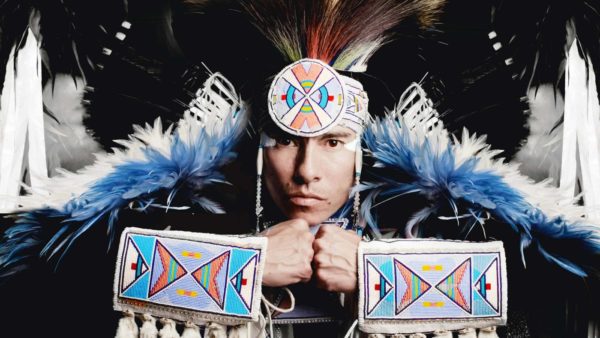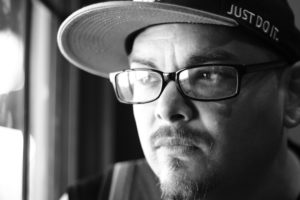
- Details
- By Rich Tupica
SAN DIEGO – The roster of musical performers was just announced for the American Indian Graduate Center’s 50th Anniversary Gala in San Diego, and it’s spotlighting some rising Native stars.
The Gala, happening March 25 at the Coasterra Event Center and Harbor Float, will feature performances by two MTV Video Music Award winners: Supaman and emcee one. Along with them, the lineup also comprises American Indian Graduate Center alumni Tanaya Winder (Southern Ute Indian Tribe, Pyramid Lake Paiute Tribe, Diné), Marlin Kingi (Oglala Sioux Tribe, Maori) and Lydia Gray (Osage Nation). Chance Rush will emcee the event. To purchase tickets, reserve a table or sponsor American Indian Graduate Center’s 50th Anniversary Gala, click here.
 Emerging musician emcee one also performs at the AIGC 50th Anniversary Gala. (courtesy photo)
Emerging musician emcee one also performs at the AIGC 50th Anniversary Gala. (courtesy photo)
For those unfamiliar, you can listen to Supaman’s acclaimed new hip-hop album here. According to his website, as a member of the Apsaalooke Nation, Supaman makes his home on the Crow reservation in Montana. Supaman is a Native American dancer and innovative hip-hop artist who has “dedicated his life to empowering and spreading a message of hope, pride and resilience through his original art form.”
He is also currently working with Grammy Award winner Taboo from The Blackeyed Peas. Taboo is also working with emcee one, as he’s been the A-list star’s international DJ and tour support. When he’s not performing, emcee one is also a youth advocate and national speaker. He recently formed a new group, #Mag7 and c-founded One Chance Leadership, an outreach program. Sample emcee one’s three albums, here.
As for the Gala, its organizers are excited to be celebrating such a long history of educational support. The American Indian Graduate Center is a national private 501(c)(3) non-profit providing scholarships to American Indian and Alaska Native undergraduate, graduate and professional students in every state, from over 500 Tribes.
“Together we are celebrating the incredible impact American Indian Graduate Center has had creating a Nation of Scholars in the past 50 years,” said Angelique Albert (Confederated Salish & Kootenai Tribes), American Indian Graduate Center Executive Director.
“Our organization has supported over 16,000 Native scholars pursuing higher education and empowered them to achieve their highest potential in college and beyond. Now it is time to celebrate our collective success.”
American Indian Graduate Center and American Indian Graduate Center Scholars are the largest scholarship providers to Native students in the United States. They award on average $15 million in scholarships annually and have awarded more than $200 million in scholarships since inception.
American Indian Graduate Center’s 50th Anniversary Gala The Coasterra Event Center and Harbor Float Wednesday, March 25 880 Harbor Island Dr, San Diego, California 6-9 p.m. Tickets are here
More Stories Like This
Native News Weekly (August 25, 2024): D.C. BriefsUS Presidents in Their Own Words Concerning American Indians
Native News Weekly (December 14, 2025): D.C. Briefs
Wounded Knee Massacre Site Protection Bill Passes Congress
Two Murdered on Colville Indian Reservation
Help us defend tribal sovereignty.
At Native News Online, our mission is rooted in telling the stories that strengthen sovereignty and uplift Indigenous voices — not just at year’s end, but every single day.
Because of your generosity last year, we were able to keep our reporters on the ground in tribal communities, at national gatherings and in the halls of Congress — covering the issues that matter most to Indian Country: sovereignty, culture, education, health and economic opportunity.
That support sustained us through a tough year in 2025. Now, as we look to the year ahead, we need your help right now to ensure warrior journalism remains strong — reporting that defends tribal sovereignty, amplifies Native truth, and holds power accountable.
 The stakes couldn't be higher. Your support keeps Native voices heard, Native stories told and Native sovereignty defended.
The stakes couldn't be higher. Your support keeps Native voices heard, Native stories told and Native sovereignty defended.
Stand with Warrior Journalism today.
Levi Rickert (Potawatomi), Editor & Publisher
